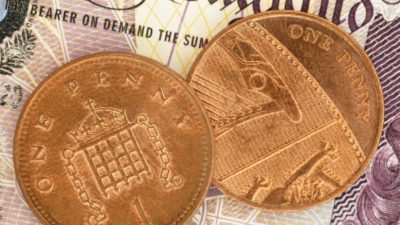House-builder Barratt Developments (LSE: BDEV) has released an encouraging trading update for the first half of the year. It shows that the company is making progress within what has been a healthy trading environment. This has allowed it to record a rise in profit of 7% versus the prior year. However, is its performance about to worsen due to an uncertain outlook for the UK property market?
A strong first half
Barratt’s sales rate of 0.68 net private reservations per active outlet per week is marginally ahead of the same period of the prior year. The figure was boosted by healthy demand outside of London, where completions have been at their highest level for nine years. This has helped to offset lower completions in London, which have reflected the planned build programme on wholly owned sites. The result has been a fall in completions within London of 5.8% to 7,180.
The company’s financial position has improved during the period. Its net cash position has risen by £171m to £195m. Alongside a healthy forward order book and strong demand, this puts the business on a sound footing for long-term growth in my opinion. Mortgage availability is likely to remain a key focus of the government, which remains committed to providing ongoing support to first-time buyers.
A difficult year ahead?
Despite its positive first half of the year, Barratt is forecast to record a fall in earnings of 3% this financial year, followed by a modest rise of 2% next year. This outlook is similar to that of sector peer Taylor Wimpey (LSE: TW). It’s expected to post a fall in earnings of 1% this year, followed by a rise of 4% next year.
Clearly, the outlook for the two companies is disappointing, but it should not be viewed as unexpected. The performance of the UK economy could suffer significantly as a result of Brexit, which could reduce demand for houses. It could also mean that mortgage availability is somewhat restricted.
Already in 2017, buy-to-let mortgages have become more restricted due to the requirement that lenders use a higher estimated interest repayment criteria. If inflation rises due to a weaker pound, potential buyers may be priced out of the mortgage market by higher borrowing rates. This would hurt the financial performance of Barratt and Taylor Wimpey.
A wide margin of safety
Although they face uncertain futures, I think the two house-builders are worth buying. They offer wide margins of safety so that even if the UK property market experiences a challenging period, their shares could still perform well relative to the wider index. For example, Barratt has a price-to-earnings (P/E) ratio of 9.2 and Taylor Wimpey’s P/E ratio is 9.9.
Both stocks offer good value for money, improving finances and a sound long-term strategy. In the short term they may fail to post capital gains, but buying now for the long run appears to be a prudent move for investors.






